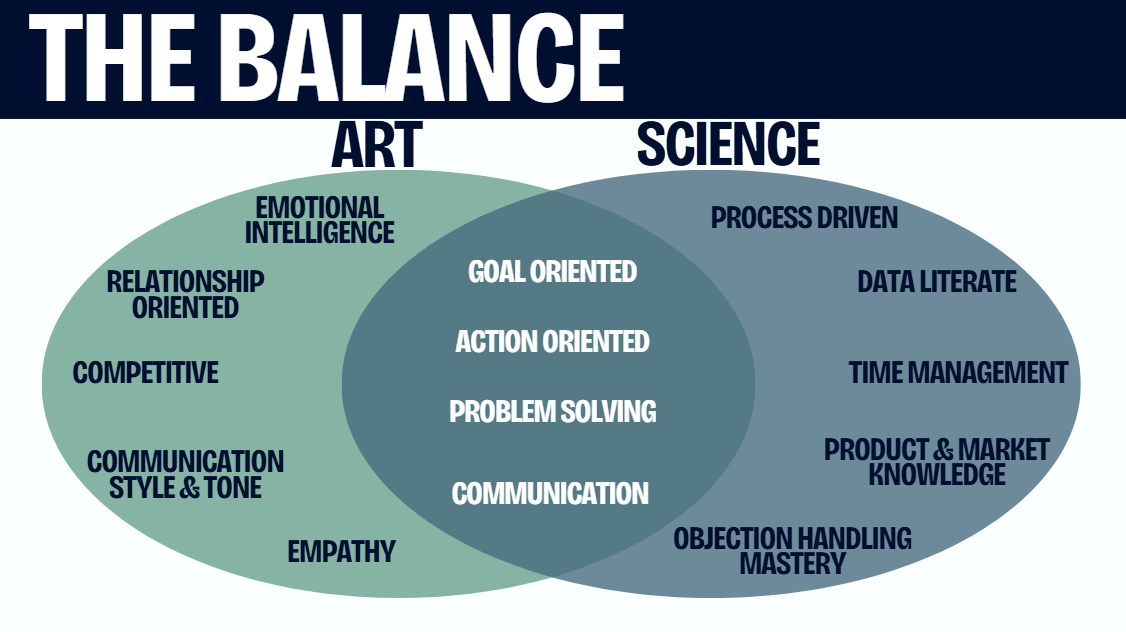The Balance of Art & Science in Sales & Why Both are Important to driving success with your teams.
Sales is often framed as either an art or a science. In reality, sustained success requires both.
Winning brands and high-performing teams don’t rely solely on natural charisma, nor do they operate like rigid machines. They master both emotional connection and disciplined execution. At LTO Consulting, that’s exactly what we help our clients build.
Earlier this month, we wrapped our Intro to Sales Training with the team at YaVe Tequila. The energy was high, the questions were sharp, and the takeaways reminded us just how much the basics still matter, especially in an industry built on relationships, reputation, and consistency.
Here were a few key KTAs (Key Takeaways) from Lucinda and YaVe founder Joe Cruz Jr. himself:
Do what you say you’re going to do.
You can’t start selling unless you listen first.
Show up. Follow up. Don’t f*ck it up.
Don’t be THAT guy. (You know the one.)
Simple? Yes.
Easy? Not always.
Important? Always.
The Science: Structure, Preparation, and Process
Sales organizations that embrace a formalized structure drive higher, more consistent results.
The evidence is clear:
Organizations with a structured sales process achieve 18% higher revenue growth. (Harvard Business Review)
Sales reps who follow a consistent framework are 33% more likely to be top performers. (CSO Insights)
Prepared sellers close deals 70% more effectively than those who wing it. (Salesforce Research)
Mike Weinberg, author of New Sales. Simplified., reinforces this reality:
“Without a proactive, structured sales process, you’re at the mercy of the market and your competition.”
Structure is not bureaucracy, it’s a competitive advantage. It ensures that teams:
Execute with precision
Identify and capitalize on opportunities
Scale efficiently without losing momentum
Without structure, even the best personalities eventually plateau. And as we’ve seen firsthand with brands like YaVe, structure builds trust — with buyers, with distributors, and within the team.
The Art: Personality, Self-Awareness, and Adaptability
However, process alone doesn’t close deals. The best sellers lead with curiosity and connect with authenticity.
As Daniel Pink explains in To Sell is Human:
“Today, selling isn’t about convincing, it’s about connecting, curating, and creating clarity.”
Customers buy from people—not processes.
They buy from those who:
Understand their needs intuitively
Build credibility and trust over time
Listen actively and adjust based on real-time feedback
The art of selling requires:
Self-awareness — Knowing when to push, when to pivot, and when to stay silent.
Adaptability — Reading emotional and organizational cues.
Personal presence — Creating authentic, trust-based relationships.
Without these skills, even the most well-trained salespeople risk coming across as scripted and disconnected.
Why The Balance Matters
Relying only on personality? You get inconsistency.
Only on process? You sound like a sales robot.
The highest-performing sales teams marry both disciplines with intentionality:
Structure ensures consistency and scalability.
Personality fosters human connection and differentiation.
Preparation elevates confidence and execution.
Self-awareness strengthens relationships and loyalty.
Jill Konrath, in her book SNAP Selling, captures this balance perfectly:
“Today’s crazy-busy buyers only give you a tiny window of opportunity. Sellers must be prepared, relevant, and highly adaptive.”
Final Thought: Build Complete Sales Professionals
At LTO Consulting, we customize every sales training to match your brand voice and team identity, whether that means candid and casual or buttoned-up and bold.
Because the best training isn’t the flashiest, it’s the one your team remembers, connects with, and actually uses.
We aren’t simply building salespeople, we’re building business leaders.
Leaders who:
Think strategically
Operate with discipline
Show up with authenticity
If your team is not actively developing both the art and the science of selling, you are leaving performance, market share, and growth on the table.


